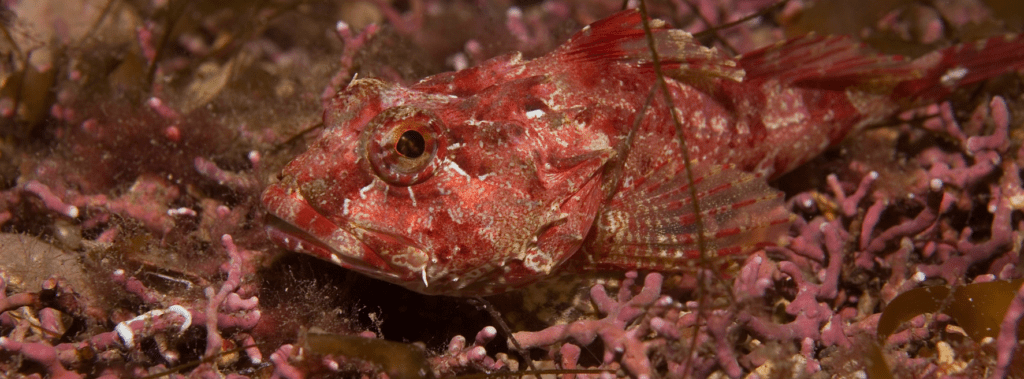By Fanny Royanez, Marine Policy and Engagement Officer
Scotland’s seas are amazing, and they matter to us all. Many people will be spending time on Scotland’s coasts this summer – rain or shine. Even just a day trip to the beach can feel like a little holiday, refreshing and replenishing us.
That’s not all, of course. As anyone who watched the ocean episode of David Attenborough’s Wild Isles series will know, our seas are home to the most fantastic array of wildlife, much of which is hidden deep beneath the waves. They’re of huge importance for the climate too, as ocean ecosystems can store even more carbon than those on land.
Our seas are a vital resource, central to the lives of communities that rely on marine industries like fishing and wildlife tourism. And they are a source of food.
We all want Scotland’s seas to be healthy and teeming with life. But the threats facing our seas are immense, and we need to act fast to help them recover.
Why do we need to restore our seas to health?
The scientific evidence makes it clear that Scotland’s marine species and habitats are in serious decline. Most of our seabed is in poor condition, with some habitats, like seagrass and flame shell beds, covering just a tiny fraction of their former areas.
Five million seabirds breed around our coastline every year, but many species are in steep decline due to climate change, unsustainable fisheries, disease, pollution and the impact of invasive non-native species.
Recent bird flu outbreaks have made things worse. It’s estimated that up to 90% of some great skua breeding populations may have been lost in Shetland’s Hermaness Nature Reserve, for example. Great skuas – or ‘bonxies’ as they are also known – are top predators, and this level of loss will have a dramatic impact on vulnerable marine ecosystems.
The effects of climate change are also making themselves felt. Scotland’s seas have experienced extreme and unprecedented heatwaves this summer, with water temperatures up to 4°C above normal in some places. Marine heatwaves pose a serious threat to wildlife, risking high levels of mortality and loss of breeding grounds. They have led to concern for industries such as salmon farming that rely on healthy seas.

Image: Wynand van Poortvliet, Unsplash
Ocean recovery zones
So what can we do to protect our seas and help them recover?
Tackling climate change is part of the answer. But caring for our seas and managing them well will also require a number of carefully planned and interlinked measures. Experience worldwide shows that strictly protecting certain defined and limited areas from damaging industrial activity is a key piece of the jigsaw.
Strictly protected areas provide dedicated havens for vulnerable and depleted marine life to recover. They become, in effect, ocean recovery zones. As marine animals and plants are able to grow larger and live longer, they reproduce more, and their increasing populations can overflow into surrounding waters. This helps marine life recover both within and beyond the strictly protected area. And these ecological benefits in turn support marine industries, including fishing and tourism.
Internationally agreed standards, including the EU Biodiversity Strategy 2030, call for at least 10% of the ocean to be strictly protected to enable large-scale ecosystem recovery. Currently, less than 1% of Scotland’s seas are strictly protected from damaging human activities.
Scottish Government proposals
The severe threats facing our ocean, and the overwhelming evidence of the benefits of strictly protected areas, led the Scottish Government to release proposals earlier this year to create ‘Highly Protected Marine Areas’ (HPMAs) in 10% of Scotland’s seas. These areas would have been given the strongest possible form of protection.
The proposals didn’t include any suggested sites for HPMAs. In part due to the uncertainty involved, HPMAs became a controversial topic, with many members of Scotland’s coastal and island communities in particular expressing concern that restrictions on fishing would damage the sustainability of areas dependent on the industry.
In June, the Scottish Government announced, ‘the proposal as consulted on will not be progressed. That means that we will no longer seek to implement HPMAs across 10 per cent of Scotland’s seas by 2026.’ However, Cabinet Secretary Mairi McAllan confirmed that the Scottish Government remains ‘firmly committed’ to ‘enhancing marine protection’, recognising the EU target of strictly protecting at least 10% of its seas by 2030. She also stated her commitment to ensuring that ‘communities across Scotland are central to the process’, and emphasised the role of coastal and island communities in shaping future policy on Scotland’s seas.
At Scottish Environment LINK, we welcome the Scottish Government’s commitment to build greater consensus and its stress on the need to deliver on ecological outcomes. But we’re deeply concerned that delaying the action needed to allow our seas to recover will lead to their further decline, making the task of restoring them to health much harder and slower.

Image: Longspined sea-scorpion Taurulus bubalis on maerl bed, South-west Loch Gairloch. Graham Saunders, Nature Scot.
Communities at the heart of ocean recovery
Community involvement will indeed be key. While healthy seas are vitally important for all of us, they play a particularly central role in the lives of Scotland’s coastal and island communities.
It’s crucial that measures to protect our seas, including strictly protected ocean recovery zones, are designed collaboratively, with these communities engaged at the heart of the process. Our best chance of restoring our seas to health will come from communities, environmental organisations, fishers and other marine industries working together with government.
That’s why in March we and other organisations wrote to the Scottish Government calling for improved stakeholder participation along with independent scientific scrutiny of its proposals for marine protection.
One of the only parts of Scotland’s sea that already has strict protection, in north Lamlash Bay off the isle of Arran, has protected status brought about through pressure and organising by local people, showing the importance of community involvement. Since the Lamlash Bay ‘no take zone’ was established, the area has seen dramatic ecological improvement. We need to see this success replicated around Scotland’s coast.
Everyone in Scotland wants to see our seas in a better condition, and creating ocean recovery zones will be a crucial step to restoring our ocean biodiversity.
Scottish Environment LINK members are calling on the Scottish Government to honour its commitment to set Scotland’s seas on the path to recovery by 2030, and create strictly protected ocean recovery zones in 10% of Scotland’s seas.
The Scottish Government is expected to develop new proposals this autumn for enhancing our marine environment, and we’re looking forward to contributing to this urgent work. Now is the time to work together to find transformative ways to help restore our amazing seas to health.
Featured image: Dead man’s fingers and anemones below the kelp zone in Loch nam Madadh, Credits to Nature Scot (Photographer: George Stoyle)
